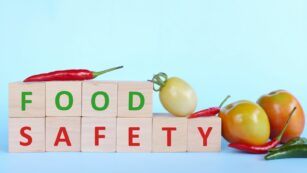In today’s fast-paced world, food safety is more crucial than ever. With increasing awareness about health and well-being, understanding food safety guidelines can prevent foodborne illnesses and ensure safe consumption. Accessing reliable food safety resources is essential for both consumers and food industry professionals alike.
A comprehensive food safety guidelines PDF serves as a valuable tool, offering clear and concise information on best practices. From proper food handling and storage to cooking temperatures, these guidelines help individuals make informed decisions about their food. By following these recommendations, everyone can contribute to a safer food environment and reduce the risk of contamination.
Food Safety Guidelines PDF
 The Food Safety Guidelines PDF serves as an essential resource for individuals and professionals alike. The document covers critical aspects of food safety including:
The Food Safety Guidelines PDF serves as an essential resource for individuals and professionals alike. The document covers critical aspects of food safety including:
-
Proper Food Handling: Techniques for washing hands, sanitizing surfaces, and avoiding cross-contamination.
-
Safe Food Storage: Recommendations for storing ingredients and cooked foods at appropriate temperatures to inhibit bacterial growth.
-
Cooking Temperatures: Required internal temperatures for various food items to ensure thorough cooking.
This PDF consolidates best practices, making them easily accessible for quick reference. By following these guidelines, users reduce the risk of foodborne illnesses through informed decision-making. Access to the PDF aids in promoting awareness and compliance with safety standards in diverse settings. For maximum efficacy, evaluating the document regularly is advisable to stay updated with food safety innovations.
Importance of Food Safety
Health Implications
 Foodborne illnesses affect millions annually, with pathogens causing illness from contaminated food. Symptoms can include nausea, vomiting, and even severe complications, particularly for vulnerable populations such as children, the elderly, and immunocompromised individuals. According to the Centers for Disease Control and Prevention (CDC), about 48 million people suffer from foodborne illnesses each year in the U.S. Implementing proper food safety practices, such as washing hands and cooking foods to safe temperatures, directly reduces these risks and promotes overall community health.
Foodborne illnesses affect millions annually, with pathogens causing illness from contaminated food. Symptoms can include nausea, vomiting, and even severe complications, particularly for vulnerable populations such as children, the elderly, and immunocompromised individuals. According to the Centers for Disease Control and Prevention (CDC), about 48 million people suffer from foodborne illnesses each year in the U.S. Implementing proper food safety practices, such as washing hands and cooking foods to safe temperatures, directly reduces these risks and promotes overall community health.
Economic Impact
Foodborne illnesses impose a significant economic burden, costing the U.S. approximately $15.6 billion annually in medical expenses, lost productivity, and premature deaths. Businesses face financial consequences from outbreaks, including lost revenue, potential lawsuits, and damage to their reputations. Ensuring strict adherence to food safety standards not only protects public health but also saves costs associated with food recalls and compliance fines.
Key Components of Food Safety Guidelines PDF
Proper Food Handling
 Proper food handling techniques minimize contamination risks during meal preparation. These techniques include:
Proper food handling techniques minimize contamination risks during meal preparation. These techniques include:
-
Handwashing: Wash hands with soap and water for at least 20 seconds before and after handling food.
-
Sanitizing Surfaces: Clean and sanitize countertops, cutting boards, and utensils before and after use.
-
Avoiding Cross-Contamination: Keep raw meats separate from other foods to prevent the spread of pathogens. Use designated cutting boards for raw meats.
-
Using Gloves: Wear disposable gloves when preparing food, especially when handling ready-to-eat items.
Storage Requirements
Appropriate food storage practices prevent bacterial growth and preserve food quality. Key storage requirements include:
-
Refrigeration: Keep refrigerated foods at or below 40°F (4°C). Use a thermometer to verify temperatures.
-
Freezing: Maintain freezers at 0°F (-18°C) or below to keep food safe and prevent spoilage.
-
FIFO Method: Implement the First In, First Out (FIFO) technique for pantry items to reduce the chance of expiration.
-
Proper Containers: Use airtight containers and wraps to protect food from contamination and drying out.
Resources for Accessing Food Safety Guidelines PDF
 Accessing a comprehensive food safety guidelines PDF is essential for anyone looking to improve their food safety practices. These resources are readily available online and can be easily downloaded or printed for convenience. Organizations such as the CDC and USDA offer reliable documents that outline best practices in food handling, storage, and preparation.
Accessing a comprehensive food safety guidelines PDF is essential for anyone looking to improve their food safety practices. These resources are readily available online and can be easily downloaded or printed for convenience. Organizations such as the CDC and USDA offer reliable documents that outline best practices in food handling, storage, and preparation.
Utilizing these guidelines can empower individuals and businesses alike to make informed decisions that promote health and safety. Regularly evaluating the PDF ensures that everyone stays updated with the latest food safety innovations and recommendations. By prioritizing food safety, communities can work together to reduce the risks of foodborne illnesses and create a healthier environment for all.



